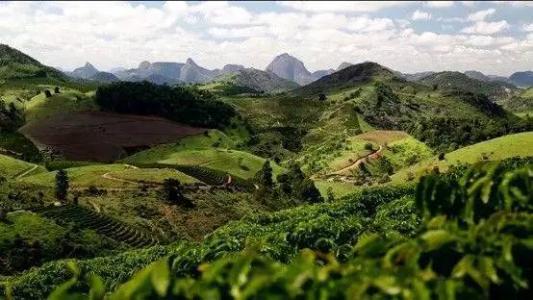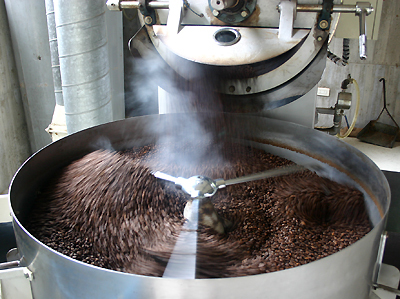A brief introduction to the production area of grinding scale of varieties with the characteristics of taste description of Yejiaxuefei coffee
A brief introduction to the production area of grinding scale of varieties with the characteristics of taste description of Yejiaxuefei coffee
"Yega Chefe" refers to strong aromas of jasmine, lemon or lime acid, as well as peach, almond or tea. On the other hand, the smell of blueberries is particularly prominent this season, and the room is full of blueberries after grinding.
Yirgacheffe Aricha Grade 1 raw bean color is yellow and green, is a typical sun-cured coffee color, uniform and full particles, few defective beans, using ordinary sack packaging for export, the basic information of coffee printed and dyed on the sack (processing plant, exporter, ICO code, treatment method, production area) the sack is a plastic bag for agricultural products packaging, this coffee can best reflect its characteristics by using light slow roasting method.
Yejassefi's coffee trees were planted by European monks (a bit like Belgian monks growing wheat to brew beer) and were later transferred to farmers or cooperatives. Yejia Chuefei is actually constructed by surrounding coffee communities or cooperatives, including Edido Idido, Hafusa Harfusa, Hama Hama and Biloya near Fog Valley Misty valley, all washed with water, but there are also a small number of off-product beans engraved with sun to enhance the charming fruit aroma and mellow thickness. These mountain villages are foggy, like spring all year round, with a gentle breeze in summer, cool but not hot, rain but not damp, and no cold damage in winter, giving birth to a unique regional flavor of citrus and flowers. Coffee trees are mostly planted in farmers' own backyard or mixed with other crops in the field, the yield per household is not much, it is a typical rural coffee. Yega Xuefei won the prize beans almost from the above-mentioned coffee villages and communities.
Africa is the hometown of coffee. Coffee trees are likely to be found in Ethiopia's KAFFA province. Later, batches of slaves were sold from Africa to Yemen and the Arabian Peninsula, and coffee was taken everywhere along the way. To be sure, Yemen started growing coffee in the 15th century or earlier. Although Arabia had the busiest port city in the world at that time, it banned the export of any seeds. This barrier was finally broken through by the Dutch, and in 1616, they finally smuggled the surviving coffee trees and seeds to the Netherlands and began to grow them in greenhouses.

Important Notice :
前街咖啡 FrontStreet Coffee has moved to new addredd:
FrontStreet Coffee Address: 315,Donghua East Road,GuangZhou
Tel:020 38364473
- Prev

Characteristics of Yunnan coffee bean iron pickup Yunnan coffee taste and flavor and description of the origin
The characteristics of Yunnan Tiepika Fine Coffee Bean Taste and Flavor description treatment method outside the origin of Ethiopia, the mutants or mixed-race varieties cultivated or found in Central and South America, India and East Africa are mainly Tibica and bourbon, and the genetic complexity is far lower than that of Ethiopia, which is the main reason for the weak physique and poor disease resistance of Arabica outside Ethiopia.
- Next

Evaluation of Flavor characteristics of Burundian Coffee beans
Evaluation of Flavor characteristics of Burundian Coffee beans Burundian formerly known as Urundi formed a feudal kingdom in the 16th century. Since the middle of the 19th century, the forces of Britain, Germany and Belgium invaded. The long-ruled monarchy, which was conquered by Germany in 1890, listed it as the territory of German East Africa and fell under the control of the Belgian army in 1916. first
Related
- Detailed explanation of Jadeite planting Land in Panamanian Jadeite Manor introduction to the grading system of Jadeite competitive bidding, Red bid, Green bid and Rose Summer
- Story of Coffee planting in Brenka region of Costa Rica Stonehenge Manor anaerobic heavy honey treatment of flavor mouth
- What's on the barrel of Blue Mountain Coffee beans?
- Can American coffee also pull flowers? How to use hot American style to pull out a good-looking pattern?
- Can you make a cold extract with coffee beans? What is the right proportion for cold-extracted coffee formula?
- Indonesian PWN Gold Mandrine Coffee Origin Features Flavor How to Chong? Mandolin coffee is American.
- A brief introduction to the flavor characteristics of Brazilian yellow bourbon coffee beans
- What is the effect of different water quality on the flavor of cold-extracted coffee? What kind of water is best for brewing coffee?
- Why do you think of Rose Summer whenever you mention Panamanian coffee?
- Introduction to the characteristics of authentic blue mountain coffee bean producing areas? What is the CIB Coffee Authority in Jamaica?

